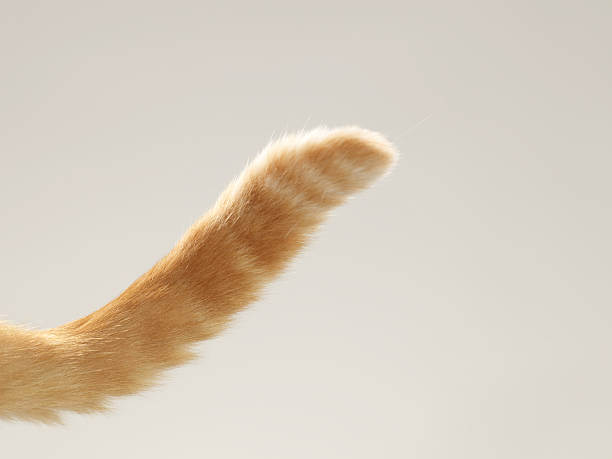Learn how to spot a broken cat tail, including signs, symptoms, and the importance of immediate veterinary care. How to Spot a Broken Cat Tail. Discover the action steps to take and the potential consequences of not treating a broken cat tail promptly. Read now to ensure the wellbeing of your feline companion. Cats are known for their mysterious, almost otherworldly agility and charm. Among their many expressive features, a cat’s tail is a magnificent tool for communication, balance, and so much more. Yet, when it comes to injuries, our feline friends are notorious for their stoicism—making it a real challenge for discerning pet owners to notice when something is wrong.

A broken cat tail is a serious injury that requires prompt attention, and understanding the subtle signs is crucial for your pet’s well-being. In this comprehensive guide, we’ll explore how you can distinguish a tail injury from normal cat behavior, recognize the urgency of the situation, and ultimately provide your companion with the best possible care. With insights from trusted veterinary experts, answers to common reader queries, and guidelines sourced from reputable resources, you’ll be equipped to act with both compassion and knowledge should you be faced with such an unfortunate event.
Introduction to How to Spot a Broken Cat Tail
While it may not seem like a serious injury at first glance, a broken cat tail requires immediate attention and treatment to prevent further complications. In this guide, we will delve into what causes a broken cat tail, how to recognize the signs, and what steps to take if your cat has suffered from this injury. By understanding the importance of prompt treatment and having a plan in place, you can ensure the well-being of your beloved feline companion.
Can Cats Break Their Tail?
Yes, cats can break their tails. In fact, it is quite common for outdoor and active cats to experience tail injuries due to their adventurous nature. Cats have a long and flexible spine, which allows them to easily twist and turn while hunting or playing. However, this also makes them prone to tail injuries if they fall or get caught in something. Additionally, cats may also suffer from tail injuries due to trauma, such as being hit by a car or falling from a height. The tail is an extension of the spine, and any injury to it can potentially affect the spinal cord and nerves, leading to severe consequences.
The 5 Steps to Take if You Think Your Cats Tail is Broken
- Observe Your Cat’s Behavior: The first step in recognizing a broken cat tail is to observe your cat’s behavior and look for any changes. A healthy cat will usually hold its tail upright with a slight curve at the top. If you notice your cat holding its tail differently, such as hanging down or being completely still, it could be an indication of a tail injury.
- Examine the Tail: Carefully examine your cat’s tail, keeping an eye out for any breaks, bends, or swelling. You may also notice signs of bruising or bleeding in the area.
- Check for Sensation and Movement: Gently touch your cat’s tail to see if it responds with movement or sensation. A broken tail may cause numbness or paralysis in the tail, hind legs, or bladder, which is a serious issue that requires immediate veterinary attention.
- Keep Your Cat Calm: If you suspect your cat’s tail is broken, it is essential to keep them calm and still. Avoid handling or moving your cat too much as this can worsen the injury.
- Seek Veterinary Care: If you have confirmed that your cat’s tail is broken, it is crucial to seek veterinary care immediately. A broken tail can cause severe pain and discomfort for your cat, and without proper treatment, it may lead to further complications.

Can You Prevent a Cat From Breaking Its Tail?
While accidents can happen, there are measures you can take to reduce the risk of your cat suffering from a broken tail. Firstly, ensuring that your cat has a safe and secure environment to play in is crucial. This includes keeping them indoors or supervising them while they explore outside. Additionally, regularly examining your cat’s tail for any injuries or abnormalities can help detect potential issues early on. Finally, providing your cat with ample opportunities for exercise and play can help strengthen their muscles and improve their balance, reducing the likelihood of falls or accidents.
What Should I Do If My Cat Breaks Its Tail?
If your cat has indeed suffered a broken tail, it is essential to act quickly and seek veterinary care. Your veterinarian will be able to assess the extent of the injury and determine the best course of treatment. This may include pain medication, anti-inflammatory drugs, or even surgery in severe cases. You must follow your veterinarian’s instructions carefully and provide proper aftercare to ensure your cat’s speedy recovery. We understand that it can be a challenging and stressful time for both you and your cat, but with proper care and attention, your feline companion will be back to their playful self in no time.
From Twitches to Twitches: What Your Cat’s Tail Signifies About Their Mood
To better understand the significance of tail health, let’s explore what a typical cat’s tail can communicate. We’ll start with the most obvious behavior: twitching. A flickering tail can indicate a playful or excited mood, while a slow swishing may mean concentration or curiosity. Rapid movement back and forth, on the other hand, could signal agitation or fear.
Learning to interpret these signs can enhance bonding with your pet and aid in detecting abnormalities sooner. A confidently raised tail suggests a happy cat, while a tail tucked between the legs can reflect insecurity or discomfort. Vigorous tail lashing is typically a sign of agitation or annoyance and a clear indicator to give your cat space.
Final Thoughts
A broken tail is undoubtedly a cause for concern, but with prompt attention and proper care, your cat can make a full recovery. By being aware of the risks, taking preventive measures, and knowing what steps to take in case of an injury, you can ensure that your feline friend stays happy, healthy, and agile for years to come. Remember to always consult with your veterinarian for any concerns or questions, and provide your cat with plenty of love and attention during their healing process. With the right care and support, your cat will be back to chasing after those elusive laser pointers in no time.
FAQS
Q: Can a cat’s broken tail heal on its own?
A: In some cases, a cat’s broken tail may heal on its own with proper rest and care. However, it is always best to seek veterinary care to assess the extent of the injury and ensure proper healing.
Q: How long does it take for a cat’s broken tail to heal?
A: The healing process for a broken cat’s tail can vary depending on the severity of the injury. In most cases, it can take anywhere from a few weeks to several months for a full recovery.
Q: Can a cat’s broken tail cause long-term problems?
A: If left untreated, a broken tail can potentially lead to permanent nerve damage or paralysis in the affected area. Therefore, it is crucial to seek veterinary care as soon as possible if you suspect your cat’s tail is broken.
Q: What can I do to help my cat recover from a broken tail?
A: Follow your veterinarian’s instructions carefully, provide your cat with a safe and comfortable environment to heal in, and give them plenty of love and attention during their recovery. Avoid handling or moving your cat too much while they heal, as this may worsen the injury.
Q: Can I prevent my cat from breaking its tail?
A: While accidents can happen, you can reduce the risk of your cat suffering from a broken tail by ensuring they have a safe and secure environment to play in, regularly examining their tail for any injuries, and providing them with ample opportunities for exercise and play.
Conclusion
Detecting and understanding ailments like a broken cat tail is a testament to the profound connection between humans and their pets. Through intuition, observance, and a touch of expert insight, cat owners can ensure their feline friends receive the care and compassion they deserve during trying times.
Remember, the actions you take at the first sign of injury can greatly influence your pet’s quality of life and recovery outcome. So stay alert, be gentle, and always opt to consult professional help when in doubt. Your careful attention could be the catalyst for your cat’s swift return to health and happiness.
